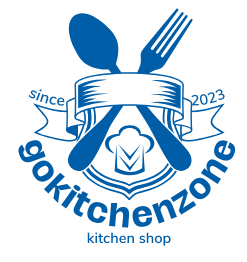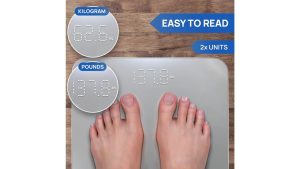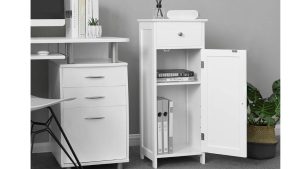Hand dryers work using a motor to blow air across a heating element and onto the hands. This process rapidly evaporates moisture, drying the hands efficiently.
Hand dryers have become a staple in restrooms worldwide, championing hygiene and sustainability. They offer a quick and effective method for drying hands without the waste produced by paper towels. Various models available, from push-button to automatic sensor-activated units, cater to different preferences and traffic levels in restrooms.
The motor and heating element inside work together to deliver a stream of warm air that accelerates water evaporation from the skin’s surface. They are designed to be robust and require minimal maintenance, making them an economical choice for high-traffic areas. Emerging technologies in hand drying also focus on energy efficiency and noise reduction, enhancing the user experience while keeping operational costs low.

Drying hands has become quick and easy. Thanks to modern hand dryers! These devices blow warm air over your hands. This air removes moisture. Let’s explore the inner workings of these dryers.
Critical Components In Modern Hand Dryers
Modern hand dryers have intelligent designs and several essential parts that work together to ensure your hands dry fast.
- Sensors: These start the dryer when they detect hands.
- Motor: It powers a fan. The fan creates airflow.
- Heating element: This warms up the air before it touches your hands.
- Timing circuit: This controls how long the dryer runs.
- Shell: The outer part protects the inside and gives the dryer its shape.
Airflow And Heating Elements
The heart of a hand dryer is its airflow and heating system. When you put your hands near the dryer, sensors activate it. The motor starts. It spins the fan. The fan pulls in air from the room. This air goes through a heating element. It gets warm. Warm air then rushes over your hands. This dries them.
| Component | Function |
| Sensors | Activate the dryer |
| Motor and Fan | Create airflow |
| Heating Element | Warm the air |
Types Of Hand Dryers
Hand dryers are a common sight in restrooms across the globe. They offer an efficient way to dry hands. Let’s explore the different types of hand dryers available on the market.
Traditional Warm Air Dryers
Traditional warm-air dryers are the classic choice for hand drying. These units work by blowing warm air. A heating element warms the air before it exits the unit, and the warm air evaporates moisture from the hands. Users place their hands under the nozzle and wait for the air to dry them. This process may take longer, typically around 30 to 45 seconds.
| Drying Time | Power Consumption | Warm Air Temperature |
| 30-45 seconds | Low to Medium | Warm |
High-speed Air Blade Dryers
High-speed air blade dryers are a modern alternative. They use a narrow sheet of high-velocity air. This air blade scrapes water off hands quickly. Drying time is significantly reduced to around 10-15 seconds. They are energy-efficient and powerful. But, they can be louder than traditional dryers due to their high-speed motor.
- Fast drying time: 10-15 seconds
- High-velocity air stream
- Energy-efficient operation
- Higher noise levels
The Science Of Evaporation
The Science of Evaporation is critical to understanding how hand dryers effectively remove moisture from our hands. Let’s dive into how hand dryers harness this process to leave our hands dry and hygienic.
Role Of Air Speed In Water Evaporation
In the world of hand dryers, air speed matters greatly. Here’s why:
- Increased Air Flow: High-speed air strips water away from the skin.
- Accelerated Drying: Fast-moving air leads to rapid evaporation.
- Improved Efficiency: Quicker drying times mean less waiting.
Faster air means faster drying. Simple.
Heat Transfer And Moisture Removal
Another crucial aspect of the drying process is heat transfer. Check out its impact:
| Heat Source | Action | Result |
| Warm Air | Heats water on hands | Speeds up evaporation |
| Ambient Air | Aids water’s transformation | Removes moisture effectively |
Warm air not only feels comfortable, but it also works faster to dry your hands.
Innovations In Hand Dryer Technology
Hand dryers have come a long way since their inception. Let’s explore the latest breakthroughs that have made them smarter, energy-saving, and more hygienic than ever.
Energy Efficiency Breakthroughs
Modern hand dryers are champions of energy efficiency. Here are some key innovations:
- High-speed airflow reduces drying time, slashing energy use.
- Heat-recycling tech uses warm air from the motor, which cuts power consumption.
- Intelligent sensors automatically shut off, saving power when not in use.
New models can dry hands using less electricity than older units.
Advancements In Hygienic Features
The latest hand dryers boast impressive hygienic upgrades:
- HEPA filters remove 99.9% of particles from the air.
- Antimicrobial coatings shield surfaces from germs.
- Touch-free operation prevents the spread of bacteria.
These features ensure hands leave the dryer cleaner than before.
Environmental Impact
Understanding how hand dryers work is more than technology. It’s about their effect on our planet. People make eco-friendly choices in every aspect of life, including the bathroom. Let’s dive into the impact hand dryers have on our environment.
Hand Dryers Vs. Paper Towels
The battle of hand dryers versus paper towels is a hot topic. Which is better for the Earth? Here are the facts:
- Hand dryers use electricity but create no waste.
- Paper towels result in trees being cut down and add to landfill waste.
Studies reveal that hand dryers are more sustainable over time. They reduce the drain on resources like water and wood.
Carbon Footprint Considerations
The carbon footprint is crucial in evaluating environmental impact. Here’s how hand dryers measure up:
| Aspect | Hand Dryers | Paper Towels |
| Production | Higher initial carbon footprint | Continuous carbon footprint |
| Usage | Low-energy models available | Consistent resource use |
| Waste | No physical waste | Contributes to landfill |
Modern hand dryers offer energy-efficient models. These models minimize carbon emissions. Paper towels cannot improve in this area. Once used, they become trash.
Health And Hygiene
Clean hands are a cornerstone of good health. High-speed hand dryers offer a swift, eco-friendly drying solution. They remove water in seconds, and many prefer them to paper towels. Yet, questions arise about their hygienic standards. Let’s explore the facts surrounding hand dryers and their health implications.
Hand Dryers And Bacteria
Do hand dryers spread bacteria? Some studies suggest they can. Dryers may disperse bacteria from wet hands into the air, which might be picked up by hands. Surfaces in the bathroom could also get contaminated. This point concerns us all.
- HEPA filters: Many modern dryers have these. They trap bacteria. They prevent bacteria from spreading.
- Regular cleaning: It’s vital for hand dryers. It stops bacteria buildup. It maintains hygiene.
The Debate On Hygiene Effectiveness
The hygiene efficacy of hand dryers divides opinion. Some argue they’re less hygienic than paper towels. However hand dryers have evolved, and new technology has improved their sanitation.
| Method | Hygiene |
| Paper Towels | One-time use, tidy disposal |
| Hand Dryers | Touchless, reduces waste |
Tips for using hand dryers properly:
- Rub your hands when drying. It helps remove bacteria.
- Use hand dryers with HEPA filters.
- Don’t touch the dryer. Choose a sensor-activated one.
The User Experience With Hand Dryers
An essential aspect of any restroom is the hand drying method provided. Hand dryers work to shape the user experience through their design and function. Modern hand dryers offer a combination of efficiency, style, and comfort. This post explores how these devices make drying hands a breeze.
Design And Accessibility
When you approach a hand dryer, its design catches your eye first. Manufacturers focus on sleek, ergonomic shapes tailored for easy use.:
- Height and reach suit users of all sizes
- Touchless operation promotes a hygienic experience
- Clear signage directs users on proper usage
Accessibility is critical, as dryers must accommodate everyone, including those with disabilities. Designs follow guidelines to ensure they are reachable and usable by all.
Noise Levels And User Comfort
Noise levels in hand dryers can impact user comfort significantly. Manufacturers aim to reduce sound without compromising drying power. Look out for these features:
| Feature | Benefit |
| Low decibel ratings | Quieter operation |
| Sound dampening technology | Less disruptive to the environment |
Enjoy a comfortable restroom experience with quieter dryers that do their job efficiently. The aim is a peaceful and fast drying process, allowing you to carry on with your day smoothly.
Installation And Maintenance
Understanding the installation and maintenance of hand dryers is essential. Proper set-up ensures longevity and routine care keeps them efficient. Let’s explore these aspects.
Setting Up A Hand Dryer
Proper installation is critical for hand dryers to function effectively. Begin by choosing a suitable location. Ensure it is easily accessible and near a power source. Follow these steps:
- Secure the mounting template on the wall.
- Drill holes for the mounting brackets.
- Connect the electrical wiring to the unit.
- Mount the dryer on the brackets and tighten.
Always consult the manufacturer’s manual for specific instructions. Use a qualified electrician for electrical connections.
Routine Cleaning And Repairs
Keep hand dryers in top shape with regular cleaning and promptly repair any issues. Maintenance tasks include:
| Cleaning Interval | Steps |
| Weekly |
|
| Monthly |
|
Address repairs without delay. Replace filters or internal parts as needed. Refer to the manual or seek professional help for complex issues.
Cost Analysis
Understanding the cost of hand dryers involves examining two critical financial angles. The upfront investments and the long-term savings that these devices promise. We’ll also consider the operational expenses that vary from model to model. Initial Investment vs. Long-Term Savings
Initial Investment Vs. Long-term Savings
Investing in a hand dryer requires an initial payment upfront.
- Durable hand dryers, although more expensive, reduce replacement costs.
- Paper towel dispensers might seem cheaper, but they have ongoing costs.
- Over time, hand dryers can lead to significant cost savings compared to paper towels.
Hand dryers pay for themselves in saved expenses by using less energy and zero consumables.
Operational Costs Of Different Dryer Models
Hand dryers come in various models, each with unique operational costs.
| Model | Power Usage | Annual Operational Cost |
| High-Speed Dryer | Low | $30 to $50 |
| Traditional Dryer | Medium | $100 to $120 |
| Eco-Friendly Dryer | Very Low | $20 to $40 |
Energy-efficient dryers minimize costs further, boasting lower energy use per dry. In contrast, traditional models may use more power but can be cheaper to purchase.
The Future Of Hand Drying
As we wave goodbye to old models, hand dryers are entering an exciting new era. Innovations push the boundaries of speed and hygiene. But what can we expect from future hand-drying solutions? How will they adapt to our growing needs for efficiency and environmental sustainability? Let’s explore the emerging technologies set to revolutionize the way we dry our hands.
Emerging Technologies In Drying Solutions
The landscape of hand drying is changing rapidly. New technologies focus on user comfort and ecological benefits. Some promising areas include:
- Ultra-Efficient Motors: Quieter, faster drying.
- HEPA Filters: Remove 99.9% of bacteria from the airstream.
- UV Light Sterilization: Kills germs inside the dryer.
- Touch-free Operation: Reduces the spread of germs.
- Innovative Technology: Adjusts energy use based on restroom traffic.
Predicting The Next Step In Hand Dryer Evolution
The next step in hand dryer evolution will likely include further intelligent technology integration. Predictions for future models feature:
- AI-enabled Sensors: Optimize drying time for each user.
- Biodegradable Materials: Reduce carbon footprint.
- Customizable Designs: Fit the aesthetic of any washroom.
- Energy Harvesting: Use the motion of hands for power.
These advancements promise to make hand drying quicker, cleaner, and more energy-efficient. The expectation is a seamless user experience with a lean towards sustainability.
Frequently Asked Questions On How Do Hand Dryers Work
How Hygienic Are Hand Dryers?
Hand dryers vary in hygiene; some may spread germs, while touchless models with HEPA filters offer improved cleanliness. Regular maintenance is crucial for hygiene.
How Do Hand Dryers Detect Hands?
Hand dryers typically use infrared sensors to detect hand presence. The sensor triggers the dryer when hands disrupt the infrared beam.
What Are The Cons Of Hand Dryers?
Hand dryers can be noisy, potentially spread bacteria, and consume significant electricity. They need to gain the portability of paper towels and may not dry hands as thoroughly.
Where Do Hand Dryers Pull Air From?
Hand dryers typically pull air from the surrounding environment. They use a fan to draw in room air to blow it dry.
What Is The Principle Behind Hand Dryers?
Hand dryers blow air across heating elements to evaporate water from the hands.
How Do High-speed Hand Dryers Work?
High-speed hand dryers utilize a strong air jet to strip water off hands rapidly without heating elements.
Are Hand Dryers More Sanitary Than Towels?
Modern hand dryers are designed with hygiene in mind and often include HEPA filters to ensure clean air output.
Do Hand Dryers Save Money Over Time?
Hand dryers can be cost-effective by reducing the need for disposable towels and associated maintenance costs.
How Much Electricity Do Hand Dryers Use?
Electricity usage varies, but modern energy-efficient models can use as little as 1. 5 watts per dry cycle.
Can Hand Dryers Be Eco-Friendly?
Yes, eco-friendly hand dryers with lower energy consumption and efficient operation help reduce environmental impact.
Conclusion
Understanding how hand dryers work better allows for informed choices in our public restrooms. These devices couple convenience with hygiene, transforming a simple task into a quick and easy process. Choosing the right-hand dryer promotes efficiency and supports a cleaner, more sustainable environment. Keep dry and carry on!









